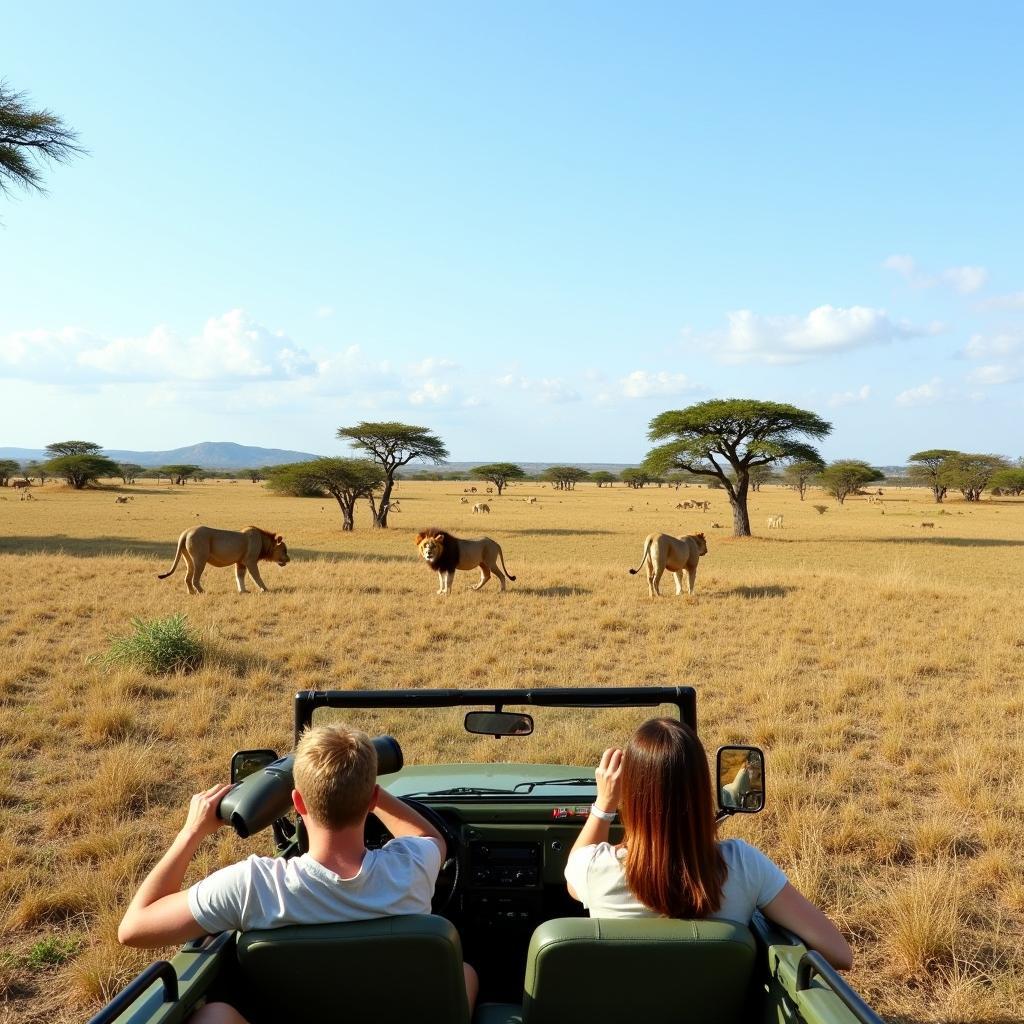African Elephant Habitat Description: Unveiling the Giants’ Home
African elephant habitat encompasses a diverse range of environments across the African continent. From savannas to forests, these majestic creatures have adapted to thrive in various ecosystems, each posing unique challenges and opportunities for survival. Understanding their habitat is crucial for effective conservation efforts.
Decoding the African Elephant Habitat
The African elephant, the largest land animal on Earth, requires vast territories to sustain its enormous appetite and complex social structure. Their habitat selection is primarily driven by the availability of food and water, which can vary significantly depending on the season and geographical location. While traditionally associated with the iconic African savannas, their range extends far beyond these grasslands. You can find more information on African animals in this fascinating African jungle animals documentary.
Savannas: A Classic African Elephant Habitat Description
Savannas, characterized by vast grasslands interspersed with trees and shrubs, represent a quintessential African elephant habitat. These open landscapes provide ample grazing opportunities, allowing elephants to consume large quantities of grass, leaves, and bark. The scattered trees offer shade during the scorching heat, while seasonal water sources, like rivers and waterholes, become vital congregation points.
Forests: A Hidden Haven
Contrary to popular belief, African elephants are not confined to open savannas. Dense forests, particularly in Central and West Africa, provide a crucial refuge for certain elephant populations. These forested environments offer a different dietary composition, with elephants browsing on fruits, leaves, and branches. The dense vegetation also provides cover from predators and extreme weather.
Deserts: Adapting to Harsh Conditions
Even the arid landscapes of deserts and semi-deserts witness the presence of these adaptable giants. Desert-dwelling elephants have developed remarkable strategies to survive in these challenging environments. They can detect water sources from miles away and possess physiological adaptations that allow them to conserve water. For more about other unique African creatures, check out the African chinchilla fish.
Key Factors Influencing African Elephant Habitat
Several factors play a crucial role in shaping the distribution and characteristics of African elephant habitats. These include climate, vegetation, water availability, and human activity. Changes in any of these factors can have significant impacts on elephant populations.
Climate Change: A Growing Threat
Climate change poses a significant threat to African elephant habitats. Rising temperatures, altered rainfall patterns, and increased frequency of droughts can exacerbate water scarcity and impact vegetation growth, leading to habitat loss and increased competition for resources.
Human-Wildlife Conflict
Expanding human populations and land use changes have resulted in increased human-wildlife conflict, particularly with elephants. Encroachment into elephant habitats leads to crop raiding and habitat fragmentation, posing a major challenge for elephant conservation. For captivating videos about African wildlife, explore African animals videos download.
Conservation Efforts: Protecting the Giants’ Home
Protecting and preserving African elephant habitats is essential for the long-term survival of these magnificent creatures. Conservation efforts focus on mitigating human-wildlife conflict, establishing protected areas, and combating poaching. Want to test your knowledge about African animals? Try African animals word crush.
Conclusion: Ensuring a Future for African Elephants and their Habitats
Understanding and protecting the diverse habitats of African elephants is crucial for their continued existence. By addressing the challenges posed by climate change, human-wildlife conflict, and poaching, we can ensure that these magnificent creatures continue to roam the African landscapes for generations to come. The African Elephant Habitat Description highlights the complex interplay of environmental factors and the importance of conservation efforts in safeguarding these iconic animals and their homes. You might enjoy learning about African jungle movies youtube.
FAQ
- What is the main habitat of African elephants? African elephants inhabit a variety of habitats, including savannas, forests, and even deserts.
- What do African elephants eat in their habitat? Their diet consists of grass, leaves, bark, fruits, and branches, depending on the habitat.
- How does climate change affect African elephant habitat? Climate change can lead to water scarcity and impact vegetation growth, threatening elephant habitats.
- What are the main threats to African elephant habitats? The main threats include habitat loss due to human activity, climate change, and poaching.
- How can we protect African elephant habitats? Conservation efforts include establishing protected areas, mitigating human-wildlife conflict, and combating poaching.
- Why are forests important for African elephants? Forests provide refuge, food, and cover from predators and extreme weather.
- How do desert elephants survive in their harsh habitat? They have adaptations for water conservation and can detect water sources from afar.
For any assistance, please contact us: Phone: +255768904061, Email: kaka.mag@gmail.com Or visit us at: Mbarali DC Mawindi, Kangaga, Tanzania. We have a 24/7 customer service team.


